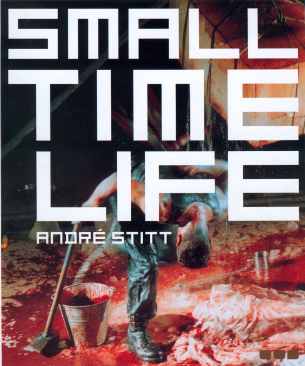Span2
"Talking Process"
Symposium Week
3
18th October 2001
At our symposium this week we convened early to launch "Art Action 1958-1998", a sure to be seminal work from Collectif Inter/Le Lieu of Quebec. Richard Martel was present as editor and one of this weeks participating artists. Martel introduced the publication and outlined it's cope in relation to performance art practices in many different countries and cultural backgrounds. The launch was supported by the Gouvernement du Quebec Delegation Generale in London.
The occasion of the launch of Art Action 1958 -1998 gave us the opportunity to discuss how historicization particularly affects the importance of process in performance art over its objectives, documents and relics. Further questions pertaining to artists practice were posed concerning the importance of art history, personal history, political & cultural , history of place in shaping artists ideas and conditions.
This weeks artists in residence - Richard Martel [Quebec], Tania Brugeura [Cuba], Ma Liuming [China] Scott MacLeod [USA] & Tanja Ostojic [Yugoslavia], each made a short presentation about their work and addressed some of these issues from their own personal experience and perspective.
Richard Martel talked about the relationship and history of Quebec - Canada
& the USA. Problems of identity and a sense of history being made by
ourselves. In Quebec there are 45 artist run spaces and in Canada as a whole
there are over 100. Le Lieu has been in existence as a centre for over 20 years.
As well as producing regular exhibitions the centre has produced a significant
number of performance art festivals. He stressed the importance of disseminating
history through action and publications. Le Lieu also publishes the art magazine
Inter.
Martel concluded that changing the future will change the past.
Tania Bruguera talked about the history of Cuba and the position of the
artist - when one leaves Cuba one's history is erased. The ongoing sense of
presentation of oneself, of re-presenting oneself. Looking for an national
identity.
Her wish to present the insides in another cultural context. In her
early work Bruguera reproduced several performances by the Cuban Ana Mandieta.
Brugeura talked about this re-presenting - of returning the work to Cuba-
perhaps a reminder of certain systems of censorship, vulnerability and a way of
re-writing history. How to survive killing yourself.
Ma Liuming showed recent work from the Istanbul Biennale in which he had the
names of the participating artists printed on chairs laid out in a local
park.
Ma Liuming sat naked and asleep in the middle of the seated arrangement
as members of the public sprayed him with canisters of cold water. He said he
was very cold during the performance and that the feeling of vulnerability and
the power that a crowd could exert over a lonely individual had correlation with
many situations in the world today, not only in China. There was also the sense
of exposing the absent artists and their international identities.
Scott Macleod discussed his relationship with documentation of his work and the problematics of capturing history. Macleod has made many private performances which also attested to his disinterest in saving the moment through mechanical reproduction. His work often finds a deliberate focus on in not seeing an entirety, of not knowing the totality. He pointed towards notions of a collective memory and the history of the site at Dilston Grove. The present artists and public being part of an ongoing history and the resonance of that history through our presence.
Tanja Ostojic discussed how her inner landscape had been transformed by the political turmoil in Yugoslavia. The lack of space for communication and developing one's own identity. In her work Ostojic uses herself as the social body with all it's attitudes and experiences. She discussed and made references to her work at this years Venice Bienale in which she accompanied it's curator throughout and was reduced to the status of ornament. Ostojic related this to s sense of the historical relationship between gender and capital, humiliation and no personality.
There was much discussion during the public forum about authorship and perhaps subconscious references to other artists and art history. Julie Bacon initiated questioning about the withdrawel of the artists in many works ad questioned what had provoked this. Brugeurra talked about encountering Mandieta through making re-productions of her performances. Scott MacLeod returned again to the notion of experiencing the record of Dilation Grove by all of us being here in this room at this time, the same time - the subtle passage of flesh and the spirit through time.
Andre Stitt
Co-curator, Span2.
Link: http://www.span2.
